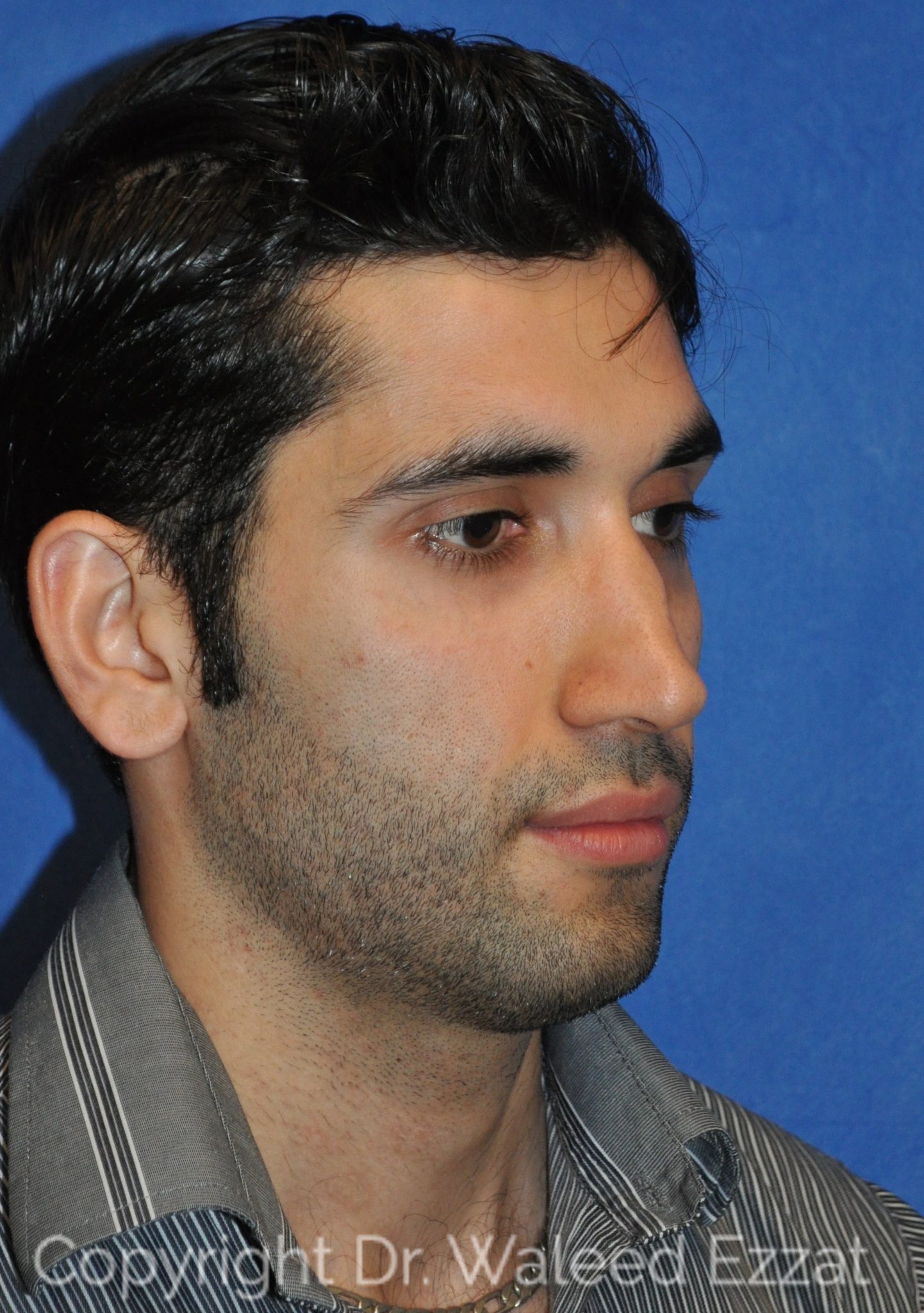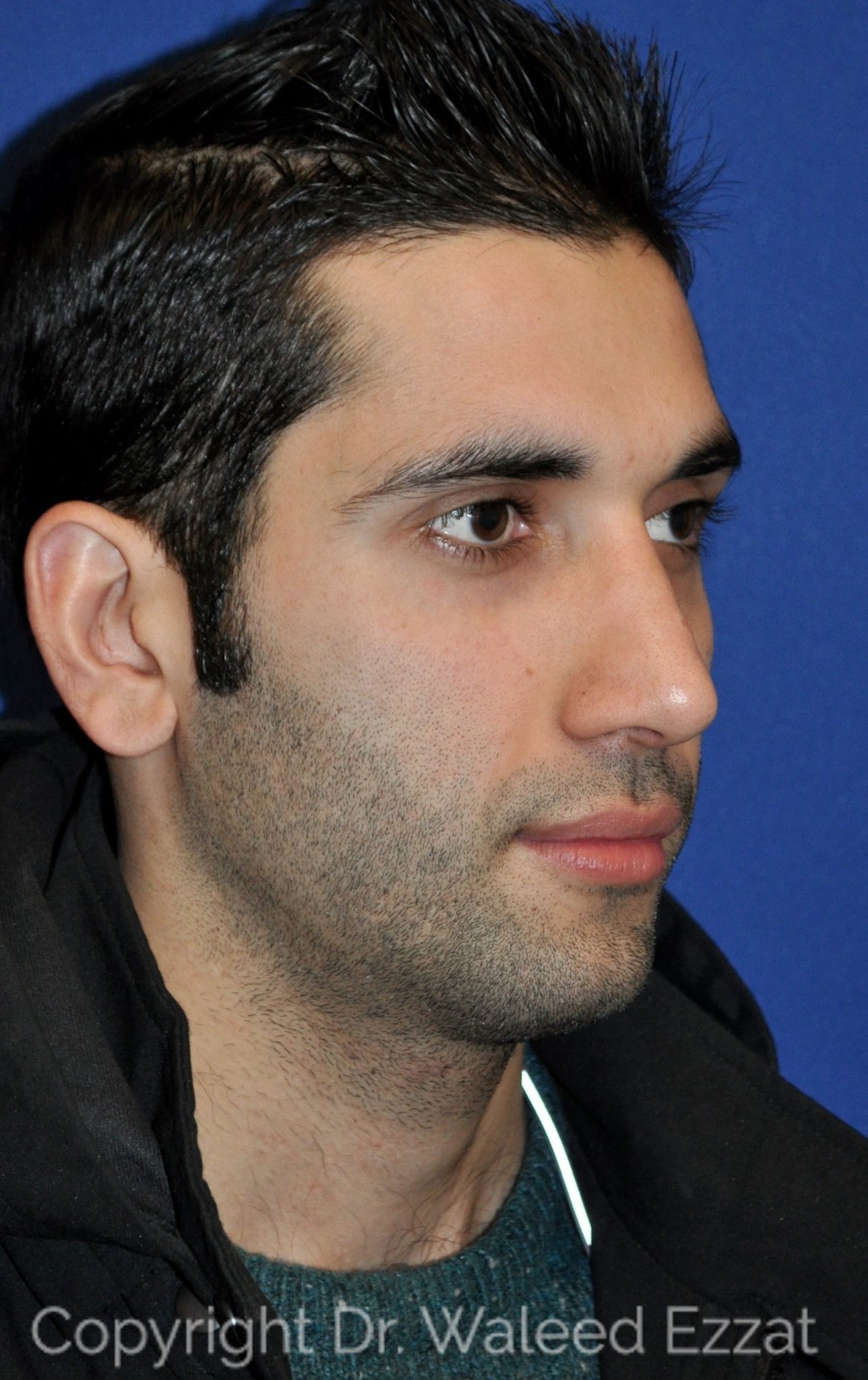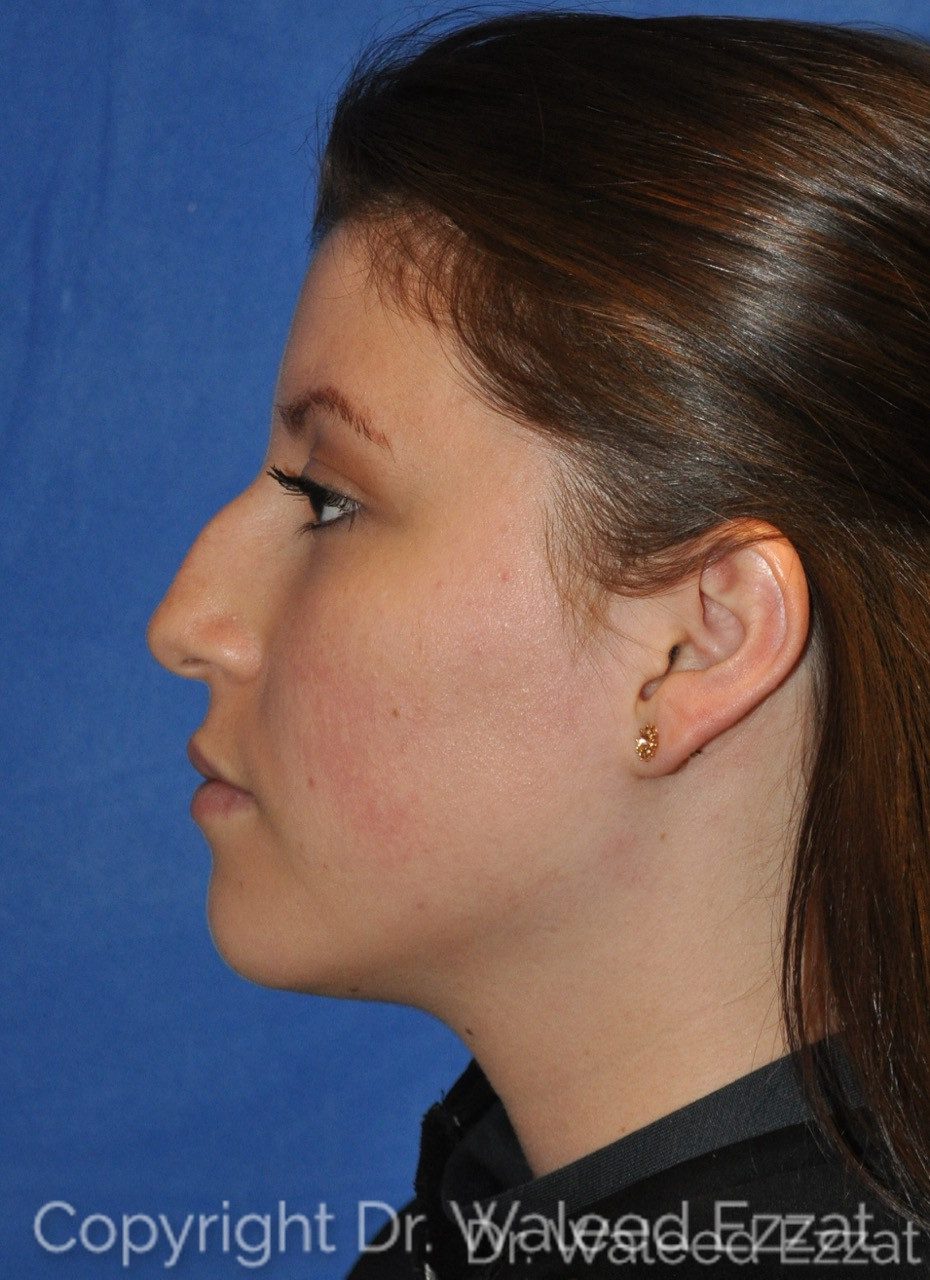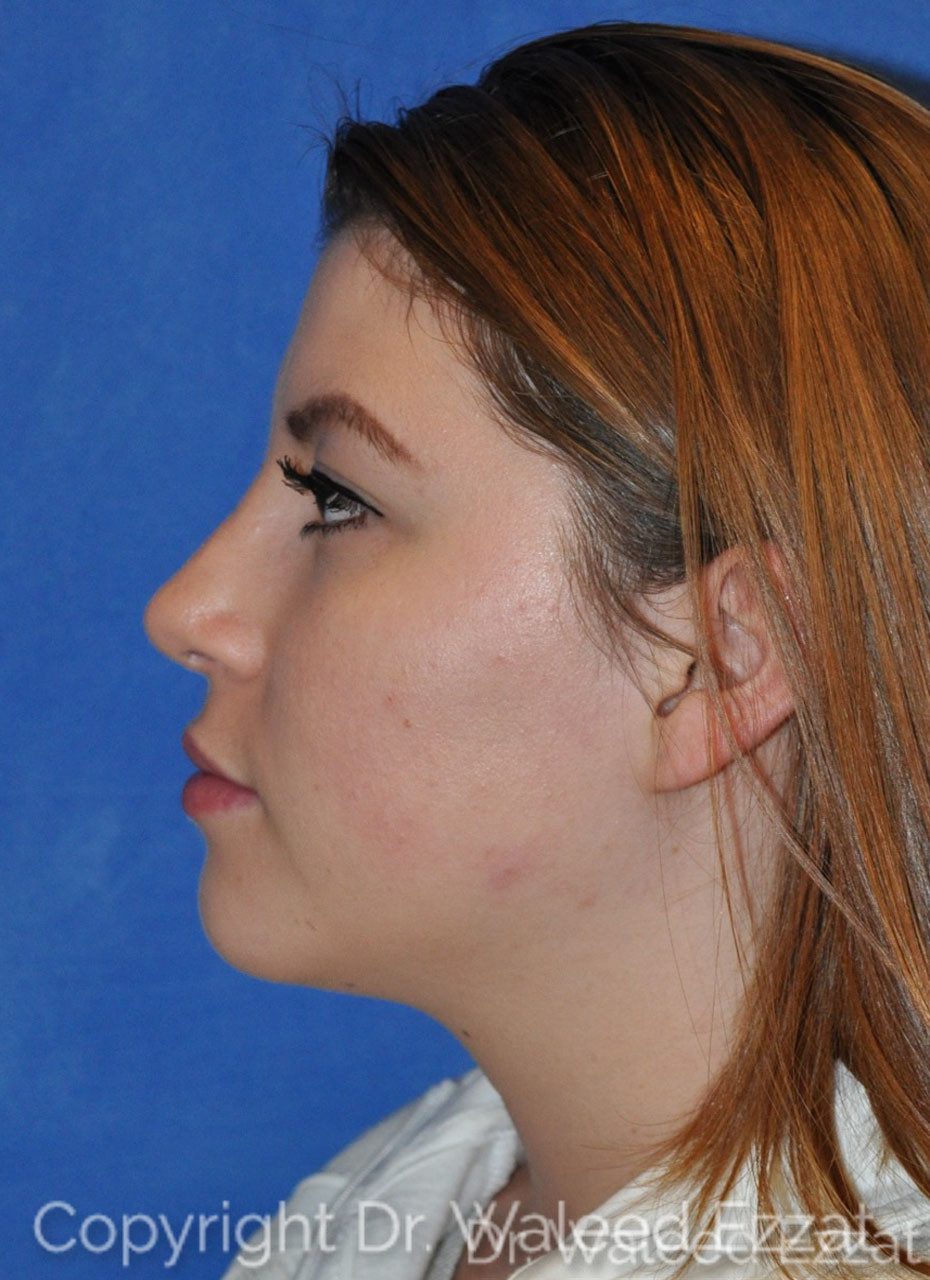Asian Rhinoplasty
A nose job, also called rhinoplasty, remains one of the most common procedures throughout the world – and the continent of Asia is no exception. While every case is unique, common requests for changes to the Asian nose are raising the dorsal profile (bridge), adjusting the tip and narrowing the overall profile. Many techniques have been used over the decades to accomplish this – from tissue grafts to nasal implants.
At our office near Boston Common, rhinoplasty specialist and board-certified facial plastic surgeon Dr. Waleed Ezzat has performed dozens of nose jobs for people of Asian descent. He is double-board certified in facial plastic and reconstructive surgery and otolaryngology – head and neck surgery, a Top Doctor Award recipient, as well as a recognized expert in rhinoplasty. His expertise and specialized approach to rhinoplasty make him uniquely suited to address the concerns of his patients of Asian descent and he has established an international reputation for treating the Asian nose. By utilizing cutting-edge grafting techniques from the patient’s own tissue, a naturally-refined nose can be attained that has longer lasting results over results achieved by implants.
Dr. Ezzat has lectured both nationally and internationally to other surgeons about the best techniques in primary Asian rhinoplasty and his approach to revision rhinoplasty in the Asian nose that has been implanted. The practice offers virtual consultations and are able to assist with arrangements for those patients that need to travel into Boston for treatment.
Contact us online to learn more
about your rhinoplasty surgery
or to schedule your consultation.
What Makes the Asian Nose Unique?
The Asian nose tends to give a lower and wider profile, also referred to as a platyrrhine-type nose. Despite having a wider and broader footprint on the face, the septum and cartilage at the tip are frequently found to be less abundant and the nasal skin tends to be thicker. Without the addition of tissue, this will significantly limit how much refinement can be accomplished without losing the structural support of the nose necessary for its function.
As a result, it is not uncommon for implants to be placed within the nose in an effort to refine the bridge and tip without making additional incisions in the body. While this may seem like a good idea, studies have shown that anywhere from 10-20% of these implants will eventually fail. When an implant fails in the nose, the body responds by pushing the implant out. Infections, pain, and open wounds can occur leading to additional challenges during revision and permanent external scarring.
When to Consider a Nose Job
The most common reasons men and women consider getting nose surgery include:
- The nose is too small and distracts from the rest of the face
- The bridge of the nose is bumpy or crooked
- The nose has been damaged from injury
The best candidates for nose surgery have realistic expectations for their procedure and are in good overall physical and mental health.
The goal of rhinoplasty is to redefine the nose into a pleasing shape that complements your nearby facial features. Finding form and function is the key here. As no two faces are alike, neither should be the approach to rhinoplasty. Boston facial plastic surgeon Dr. Ezzat believes that this is a team effort, listening to your concerns and tailoring your plan to fit your needs is the basis of his philosophy.
For some, the tip of the nose can either be too wide (or bulbous), asymmetric or give the appearance of a droopy tip (also called a ptotic tip). Making minor changes along the cartilages of the nasal tip can have small but profound changes to the overall appearance of the nose without giving it the “plastic” look.
For others, a hump near the midpoint of the nose (called a dorsal hump) can be the main culprit and give the illusion of a droopy tip and/or stubby nose. Refining this hump, while keeping the rest of the nose in harmony with your face, is crucial to giving a natural look to your face.
While these are only a few examples of approaches to a rhinoplasty, there are many different types/shapes of noses and each one belongs to a different face. Therefore, a customized approach to each patient is the hallmark of Dr. Ezzat’s practice. Making the right changes to your nose (so that it complements your face) will help ensure you get the most natural look possible after surgery.
Before Your Nose Surgery
Before you schedule your rhinoplasty procedure, you’ll have a private consultation with Dr. Ezzat. During your meeting, you can ask Dr. Ezzat any questions you may have about nose jobs and discuss your ideal outcome. Dr. Ezzat will also explain the procedure in greater detail and let you know what results you can expect to see.
Dr. Ezzat will also perform a physical evaluation to determine your candidacy for a nose job. Depending on your aesthetic concerns, he may recommend additional procedures to complement your results. Some people enhance their results from a nose job using injectable fillers. Functional rhinoplasty can help those suffering from persistent nasal obstruction, snoring problems or sleep apnea.
Visualize the Difference!
Visualize your results easily with an advanced rhinoplasty simulation tool. Launch SimulatorYour Rhinoplasty Procedure
Nose surgery is performed as an outpatient procedure. In most cases, general anesthesia is used to perform rhinoplasty, though in some instances, local anesthesia may be preferable. The incisions for nose surgery are very well hidden, and are typically made inside the nostrils, outside the nostrils within the natural creases of the nose, or across the column of tissue between the nostrils.
Each rhinoplasty procedure is custom-tailored to the individual’s needs. Dr. Ezzat will lift the skin covering the nasal bones and cartilage, giving him access to the nose anatomy. In the case of a bump or ridge on the nose, Dr. Ezzat may remove a small amount of bone or cartilage to create the desired lines. The nostrils can also be reshaped and the septum can be straightened. Finally, the skin is redraped over the nose and eliminated nasal dressing is placed.
Request a Consultation
Your Nose Job Recovery
Your recovery experience after getting rhinoplasty will vary depending on the surgical approach used, your health and whether you have included any additional surgeries. It’s a good idea to keep your head elevated during the first week after surgery to promote optimal blood flow. Some amount of swelling and bruising is to be expected, and any discomfort can usually be managed with over-the-counter pain medications.
Most people resume work and other normal activities about 2 weeks after getting a nose job. You should avoid doing strenuous exercise for a minimum of 1 month after surgery. Your results will continue to develop over the following year.
Your New Look
Once your final results from your nose job have developed, you should see a difference in the size and shape of your nose. With natural-looking rhinoplasty results, your nose should seem more proportional to your face and flatter your features better.
Contact us online or call our office at 857-350-4205to learn more about your facial surgery options.
Rhinoplasty FAQs
How much does rhinoplasty cost?
Total cost depends on the type of nose surgery and procedures that you require to attain the look that you desire. The total cost will include items such as surgeon’s fee, facility or anesthesia fees, medications, and other costs.
Is rhinoplasty covered by insurance?
Rhinoplasty might be covered by insurance if it is deemed a medical necessity to restore proper function of your nose. If the procedure also has a cosmetic component, only a portion of the nose surgery may be covered by insurance. If it is purely for cosmetic reasons, your rhinoplasty will not be covered by insurance.
If you have specific questions or are unsure if your procedure could be covered, call the number listed on the back of your insurance card.
Can I view before and after photos of people near me who have had nose surgery?
Yes. View our online photo gallery to see before and after pictures of real people who have had rhinoplasty in the Boston area.
If you are considering nose surgery, it can be helpful to bring to your consultation photos of people with a similar facial structure as yours and whose nose shapes you admire.
How do I know if rhinoplasty is the best procedure for me?
Rhinoplasty can be performed for both cosmetic and medical reasons. If you are unhappy with the size, shape, asymmetry or function of your nose, this procedure may be a good fit for you. Dr. Ezzat will perform a physical examination and listen to your goals in-depth to help you decide if you could be a good candidate for nose surgery.
Does nose surgery hurt?
Nose surgery is typically performed under general anesthesia, so you won’t feel any pain or discomfort during your procedure. Immediately afterward, expect to have some tenderness, bruising and swelling. These side effects are typically easily managed with the use of prescription or over-the-counter pain medications.
What can I expect during rhinoplasty recovery?
You will need to keep your head elevated while sleeping for at least the first week after nose surgery. Swelling, bruising, tingling and some numbness are to be expected, and these should gradually diminish over the next weeks.
Many people are able to return to work and other daily activities within about 2 weeks after getting nose surgery. Dr. Ezzat will ask that you limit physical activity for at least four weeks after your procedure.
When will I see my final results?
You will have a good idea of what your final results will look like around six weeks after rhinoplasty. However, it can take six months to a year for your final outcome to fully develop. Continue following Dr. Ezzat’s recovery guidelines in order to optimize the results of your nose surgery.
Do nose jobs last forever?
Yes, nose job results are long-lasting. That said, subsequent injuries or trauma to the nose can affect your results. Additionally, the natural aging process can cause subtle changes to your facial structure and appearance over time.

Telephone No.857-350-4205





